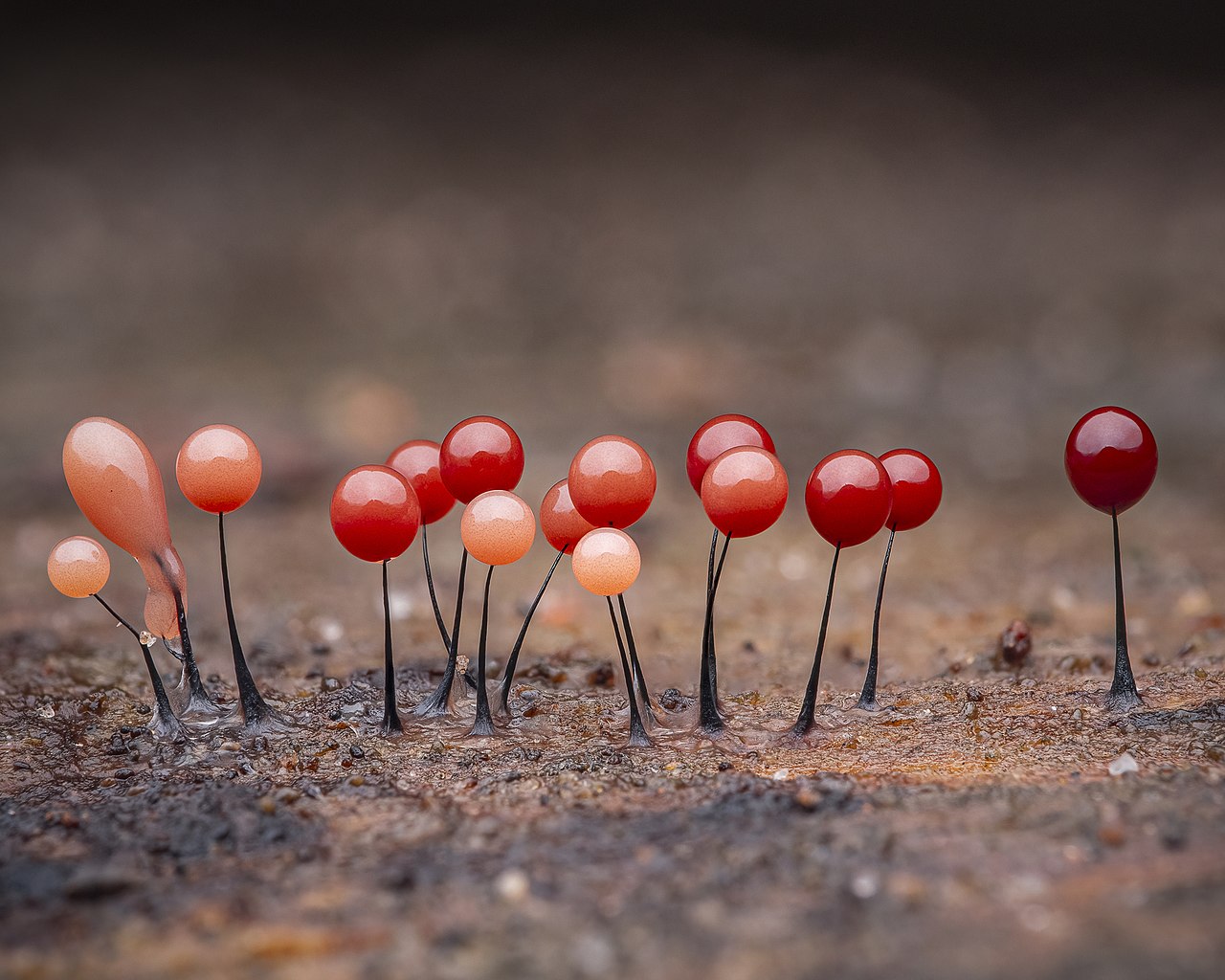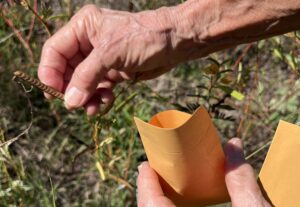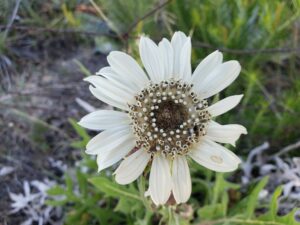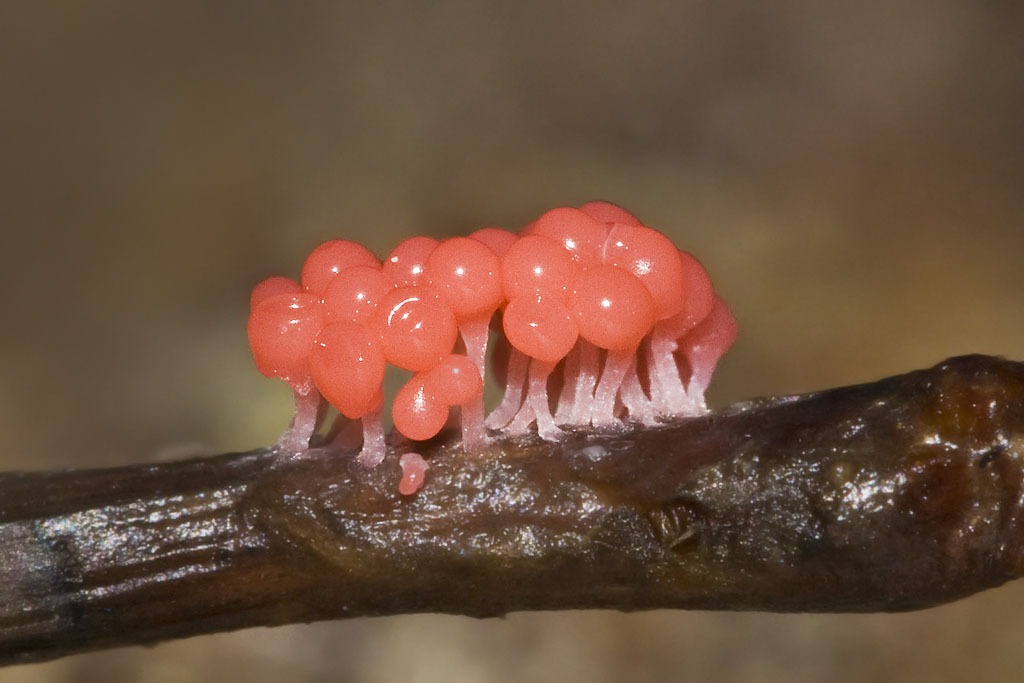
Don’t ever believe you’ve got nature figured out. Just as soon as you think you’ve got a handle on things, nature will unveil something so strange and unexpected that you must throw all of your assumptions out of the window.
Case in point: Myxomycetes (pronounced MIX-oh-my-seats), or plasmodial slime molds.
BRIT Resident Research Associate Harold W. Keller is an expert on this amazing and confounding life form. He recently co-authored a paper published in American Scientist, “The Myxomycetes: Nature’s Quick-Change Artists.” Here are six fascinating facts from the article that will make you question what you think you know about life on this planet:
1. Slime molds aren’t molds. Myxomycetes have confused scientists for hundreds of years. On the one hand, they produce stalks that resemble mushrooms and distribute spores. That would make them fungi. On the other hand, they ingest their food to eat (something fungi can’t do) and they move. Myxomycetes can propel themselves along under their own power, a very animal-like trait.
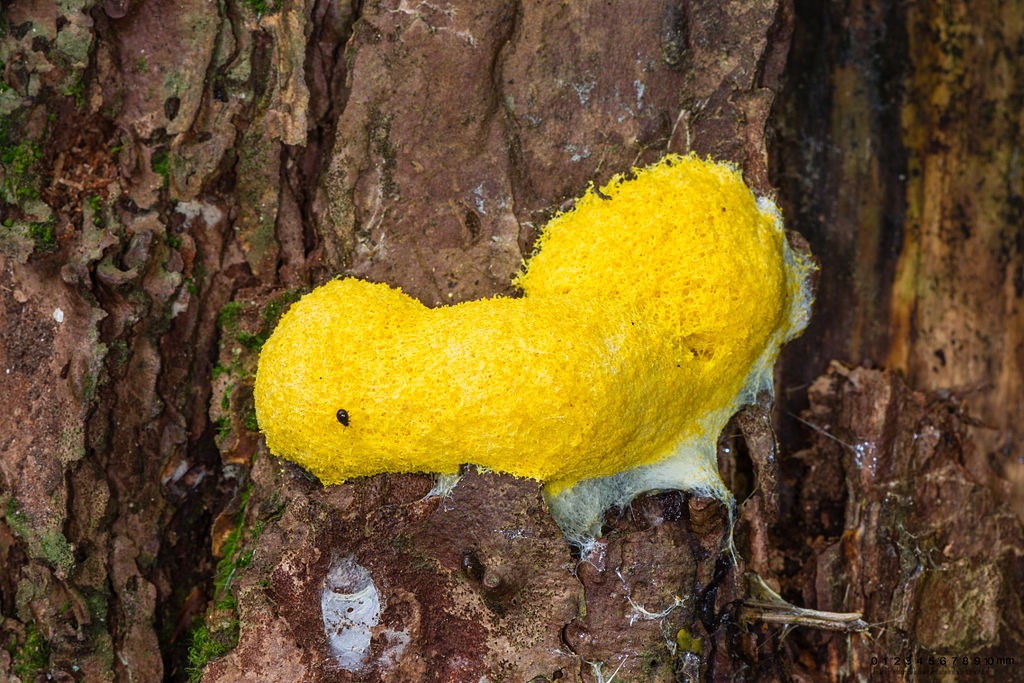
Eventually, slime molds were placed in the Kingdom Protista, which is an unusual classification. Protists are not defined by their genetic relationships in the same way that organisms in the Plant, Animal and Fungi Kingdoms are. Rather, protists are defined as not belonging to any other kingdom. Basically, protists are the “none of the above” of life.
Slime molds are divided into several categories, with Myxomycetes the largest group with about 1,000 known species.
2. Myxomycetes join together to form plasmodia, which are neither unicellular nor multicellular organisms. Most organisms can be divided into unicellular creatures such as bacteria, in which all functions are carried out by one cell, or multicellular creatures such as plants or animals, in which cells are specialized to perform different functions that support the organism. A cell, for reference, is the smallest unit of life; each cell contains a nucleus, which holds genetic material, and cytoplasm, the liquid that fills the cell, all contained within a cell membrane or cell wall.
In contrast, the Myxomycete lifecycle allows the organism to switch back and forth from unicellular to not-exactly-multicellular (this is not a scientific term!). To simplify a complex process, Myxomycetes begin as single-celled spores. These spores mature, mate, and then form a plasmodium, a stage that contains multiple nuclei within one cytoplasm.
The Curious Case of the Texas Blob
In 1973, a woman in Garland discovered a large frothy yellow mass in her yard. She attacked it with a rake. A few days later, it was back, bigger. Her husband went after it with a stick. It came back. Eventually, the family called the fire department, which bombarded the yellow mass with water from a fire hose. Local papers picked up the story, and the mass was nicknamed “the blob” after the 1959 Steve McQueen movie. Soon blobs were being discovered across North Texas, and the story was covered in the New York Times. Then, as quickly as it appeared, the blob vanished.
Aliens, said the public. Slime mold, said scientists.
If you see a slime mold in nature, you’re seeing it in its plasmodium phase, going from microscopic to several centimeters or even meters within a few hours. Plasmodia can develop and expand remarkably quickly; in addition, multiple separate plasmodia can fuse to form a larger organism. It’s not unusual for one to seem to appear out of nowhere overnight.
Plasmodia eventually form fruiting bodies that resemble mushrooms with a slender stalk and globular head, in which spores develop. And so the cycle begins again.
3. Under unfavorable conditions, slime molds can put life on hold. It’s hard out there for a slime mold, but if the going gets tough, Myxomycetes can stop going. In their unicellular stage, the cells can enter a dormant stage. The organism develops into a rounded shape and develops a tough cell wall that can survive drought, extreme temperatures or toxic chemicals.
Similarly, if the organism begins to dry out or is unable to find food in the plasmodium stage, it can form a sclerotium (a resting phase), in which thick walls form around 0 to 4 nuclei. The resulting structures look like, well, “cells.” If conditions improve, the cell-like structures can “wake up” as plasmodia again. It’s an efficient way for the organism to endure in a wide variety of forms.

This makes Myxomycetes especially hardy, and varieties can be found worldwide in ecosystems from forests to deserts, grasslands to tundra. The greatest variety of species has been found among leaf litter and decaying branches on forest floors. However, slimes molds have been collected from the tops of trees, on dried stems of cacti, along the stalks of grasses, and under the margins of melting snowbanks.
4. Slime molds can learn and remember. Myxomycetes can get around. They don’t move very fast, usually about a millimeter per hour, but they can maneuver up, along and around obstacles. The organism pushes itself forward in small pulsations visible through timelapse footage. (Many good videos of slime molds in motion are available online, including this from the science education program Deep Look and this from the BBC.)
Incredibly, Myxomycetes move with what might be called intelligence. In a 2012 study, scientists placed Myxomycetes in a maze with food at one end. The organism located the food by growing along every path of the maze then retracting from the all paths that didn’t lead to the food, leaving behind a trail of slime that chemically indicated a dead end. (Watch slime molds solving mazes–and map the most efficient routes through a landscape–on this video from the BBC.)
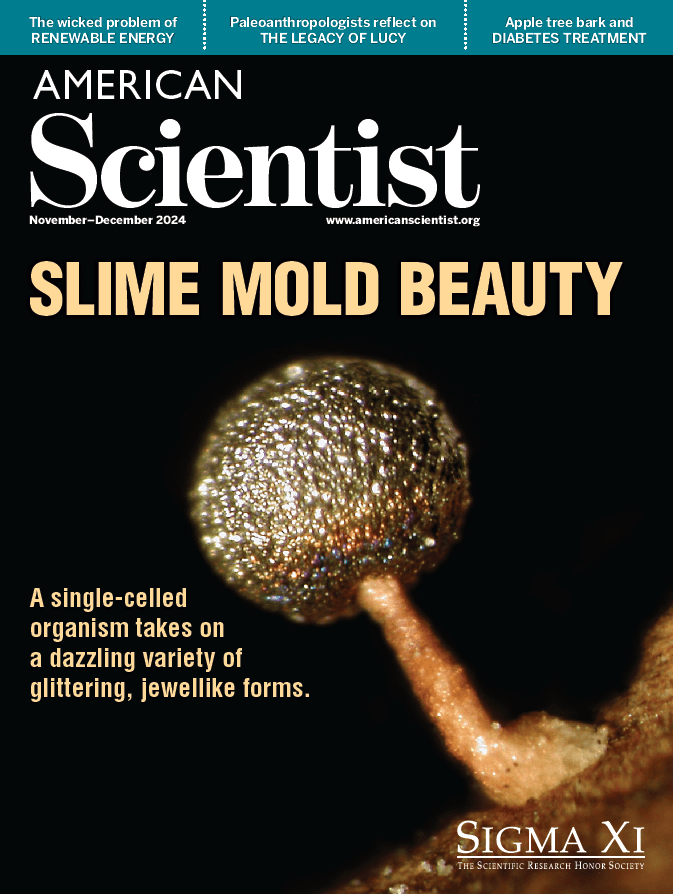
In another experiment, scientists “trained” a slime mold to cross a bridge covered in a harmless but bitter chemical to get to food. At first, the organism crossed the bridge very slowly, but with repeated exposure, it increased its speed. Then the scientists introduced a new plasmodium to the same environment alongside one of the “trained” organisms. The two organisms fused and crossed the bridge without hesitation.
That’s pretty smart for an organism that doesn’t have anything even resembling a brain!
5. Slime molds can be beautiful. To the naked eye, most Myxomycetes range in appearance from blah to honestly kind of gross. The human mind simply doesn’t find yellow or brown gelatinous blobs attractive.
However, under a microscope the fruiting bodies of Myxomycetes can be beautiful. Iridescent colors appear in four out of five of the myxomycete orders, formed by the outer layer of the fruiting body head. The heads of fruiting bodies also demonstrate autofluorescence–that is, they emit light after absorbing it. Keller and his colleagues have hypothesized that this protects developing spores from damaging ultraviolet light.
6. Slime molds could be used to remediate environmental contamination. Researchers are currently investigating if Myxomycetes could be harnessed to help clean up areas contaminated by heavy metals such as zinc, cadmium, magnesium and arsenic.
One plate of slime mold coming up!
Myxomycetes may or may not be attractive, but they aren’t dangerous. If you spot bright yellow Fuligo septica in your yard, it will not harm you, your plants or your pets. Most myxomycetes eat bacteria and yeasts.
In fact, native peoples of Cofre de Perote in Veracruz, Mexico enjoy eating F. septica fried with peppers and onions and wrapped in tortillas. That said, we do not recommend foraging for Myxomycetes, as they have not been tested for edible human consumption.
For example, the Myxomycetes species Fuligo septica, popularly referred to as scrambled-egg slime mold, was shown to be resistant to harm by these chemicals. At the same time, the organism can accumulate the metals in a safe form. Researchers have proposed using F. septica as part of bioremediation measure, developing genetically engineered plants using F. septica, and/or using F. septica as an indicator of heavy metal pollution in an ecosystem.
Myxomycetes are both remarkable and humbling. They remind us that no matter how much we think we know, nature always has surprises in store–like the none-of-the-above, sort-of-multicellular-but-not, smart-without-a-brain slime mold!
For reprints of this article, please contact American Scientist. The official reference for this article is:
Keller, H.W., S.E. Everhart, and C. M. Kilgore. 2024. The Myxomycetes: Natures’s Quick Change Artists. American Scientist. Sigma Xi. Vol. 112, Number 6. 352-359.

